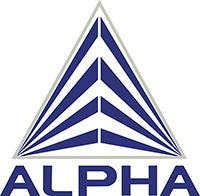Managing a growing construction firm with QuickBooks and Salesforce can prove a bit tricky, especially when more companies are added over several decades. Typically, siloed applications are adopted and bolted on, and manual data entry balloons to unmanageable levels.
“We started off as a small handyman painting company and over time layered on a roofing company, a siding company, and then we figured out that we needed a company to house all of the corporate employees that oversaw the three companies,” says Joel Sisto, Chief Financial Officer of IOC Construction. “Before we knew it, we had four separate instances of QuickBooks that didn’t talk to each other. And along with that, we used Salesforce to bring all of it together.” But consolidating and reconciling data wasn’t easy.
The Batavia, IL-based company manages commercial construction projects from start to finish, from construction to roofing to painting and maintenance for multi-family, commercial high rise, and industrial complexes. IOC Construction, also offers maintenance services to medical facilities and property management to commercial property owners. “Because our systems didn’t talk to each other, intercompany data was unbelievably difficult to maintain,” Sisto says. “Missing an entry in one company but not another, became a humongous headache for us.”
At quarters and year end, reconciliations were painful. A construction project that included roofing and painting would be represented in three QuickBooks instances, and allocating costs for any one project was error-prone, Sisto says, and “Reconciliation was a nightmare.”
“Salesforce was where we brought it all together,” he continues. “At the end of these projects, we were using Salesforce as a gross income measurement tool, which was a really bad idea because it was all these different systems didn’t talk to each other, and didn’t really reconcile, which created numbers that may or may not be correct.” “It was a mess,” adds Jessica Hill, ERP Manager. “There were six of us who daily entered data into all platforms. Hardly anything ever matched.”
Reconciling multiple credit cards across four companies and allocating various project costs correctly was another headache. The task grew so complicated that employees began placing unreconcilable receipts in paper folders. They managed projects manually with manila folders, which, with 150 or so ongoing projects, and some 300 or more projects a year, making reconciliations was challenging.
“Before you knew it, you got to the end of the year trying to close the books and we had a miscellaneous credit card expense folder that maybe did or didn’t get reconciled, and some miscellaneous expenses never got job costed,” Sisto says. “They’re hard costs, but the real cost is the not knowing just hoping that the number you think you have as your profitability for the job is correct and not knowing if it really is.”
David Benning, Chief Executive Officer, summarizes the challenges: “The complexity of our accounting setup was a black box of unknowns and bad data. We were trying to use various systems not as they were intended but in an overly complex way. We didn’t know how bad the data actually was because the data itself was entered inconsistently.” Add in the fact that QuickBooks lacks user controls and allows anyone to make changes freely, and it’s easy to envision the resulting chaos.
Paper-Processes Hindered Growth
As a very successful company, IOC made do. Until the company’s growth caused havoc. “After 30 years, we were getting to a point where we just needed to consolidate into a single entity,” says Sisto, who joined the company in 2020. “The first step of that is getting your accounting in order.”
 Canada (English)
Canada (English)
 Colombia
Colombia
 Caribbean and Puerto Rico
Caribbean and Puerto Rico
 Ecuador
Ecuador
 India
India
 Indonesia
Indonesia
 Ireland
Ireland
 Malaysia
Malaysia
 Mexico
Mexico
 Panama
Panama
 Peru
Peru
 Philippines
Philippines
 Singapore
Singapore
 South Africa
South Africa
 Sri Lanka
Sri Lanka
 Thailand
Thailand
 United Kingdom
United Kingdom
 United States
United States








